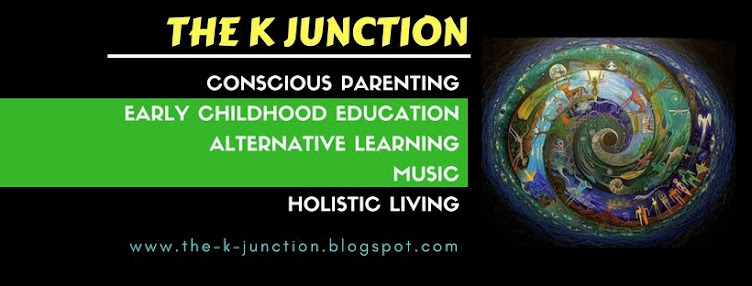With the recent rare phenomenon of Super Blood Moon Lunar Eclipse, kids have been pretty amazed with the eclipse phenomenon. This is a perfect opportunity to make a hands-on model & activity showing how exactly the solar & lunar eclipse occur. This DIY solar system model is super simple & you can make use of things at home to make it. This is a perfect Astronomy starter for kids.
Things Required
- Sphere 1 - Sponge ball or yellow smiley ball or an orange
- Sphere 2 ( smaller than sphere 1) - Ping pong ball or lemon or small thermacol ball
- Wire that can be bent easily but is stable enough. I used pipe cleaner
- Aluminium foil
- Red gelatine paper
- Stack of books or an elevated platform
- Something to put the sponge ball on, I used a diya lying around at home
- Torch
How to Setup
- Sphere 1 represents the earth & sphere 2 represents the moon. I used a sponge globe for sphere 1 and a small thermacol ball for sphere 2.
- Wrap aluminium foil over sphere 2 so that it reflects light falling on it in a better way. Moon reflects the light falling on it. This step is optional though.
- Pierce a little hole & insert the wire (I used pipe cleaner) into the earth, bend it at right angle, then again bend it at right angle & then insert it into the moon. Align the wire such that earth & moon are in front of each other with their equators aligned horizontally. Refer the picture for clarity.
- Place the earth on a stand, I used a diya
- Take a stack of books or an elevated platform (I used a small stool) & put a torch on it. Torch represents the sun. Adjust the height of the book stack such that the torch light falls at the equator of the earth.
- Switch off the lights of the room & switch on the torch.
- With this setup, you can explain first how the earth goes round the sun by moving the earth manually.
- You can also explain rotation of earth & tell how days & nights happen when sunlight falls on a specific part of the earth.
- Now by taking the moon round the earth, you can how how differently the moon shines at different alignments because of the angle at which sunlight is falling on it. You can explain moon phases with this setup.
- Now to explain lunar eclipse, you can align sun, earth & moon in a line respectively. Of course you have to revise your own concepts first before you start explaining verbally about this setup, kids have deep strange questions!
- In a similar way, you can explain the solar eclipse as well.
- To show the blood moon in some sense, you can take red gelatine paper and put it in front of the torch. However this is not the real explanation of blood moon. It occurs because earth’s atmosphere absorbs all the colours in the spectrum instead of red & hence very little percentage of sun’s rays (in red spectrum) reach the moon during eclipse & it appears to be red.
Hope you liked this simple to set up activity to explain earth’s rotation & revolution, moon’s revolution, moon’s phases, lunar & solar eclipses.
Do not forget to follow "The K Junction" on Facebook page & closed Facebook group, Twitter and Instagram for day to day updates that might not always find a place on this blog. Subscribe to our YouTube channel to know more about our early learning journey, DIY & Montessori & Waldorf inspired activities for kids, kids books & toys reviews and much more!
Hope to see you around. Happy Parenting!






No comments:
Post a Comment